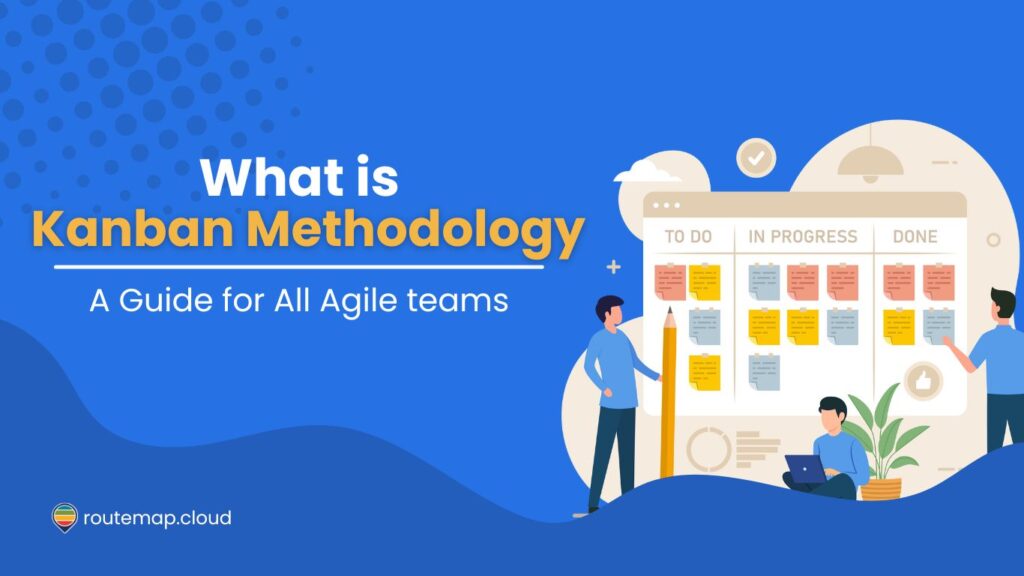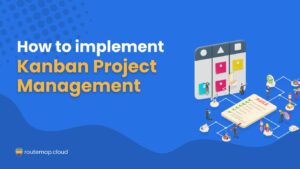In project management, Agile methodologies have revolutionized the way teams approach tasks and projects, emphasizing adaptability, customer focus, and iterative progress. Among these methodologies, Kanban stands out for its simplicity and power.
But what is Kanban methodology? Originating in the manufacturing floors of Toyota, Kanban has since transcended its roots to become a key player in industries ranging from software development to healthcare.
This guide explores this methodology, detailing its principles, applications, and benefits, helping Agile teams understand how it can streamline their processes and enhance their efficiency.
Table of Content
What is Kanban?
Kanban is a popular Agile methodology used primarily for managing work, emphasizing lean principles and continuous delivery without overburdening the team members. Additionally, it operates on a system where tasks are “pulled” from a backlog into a consistent workflow.
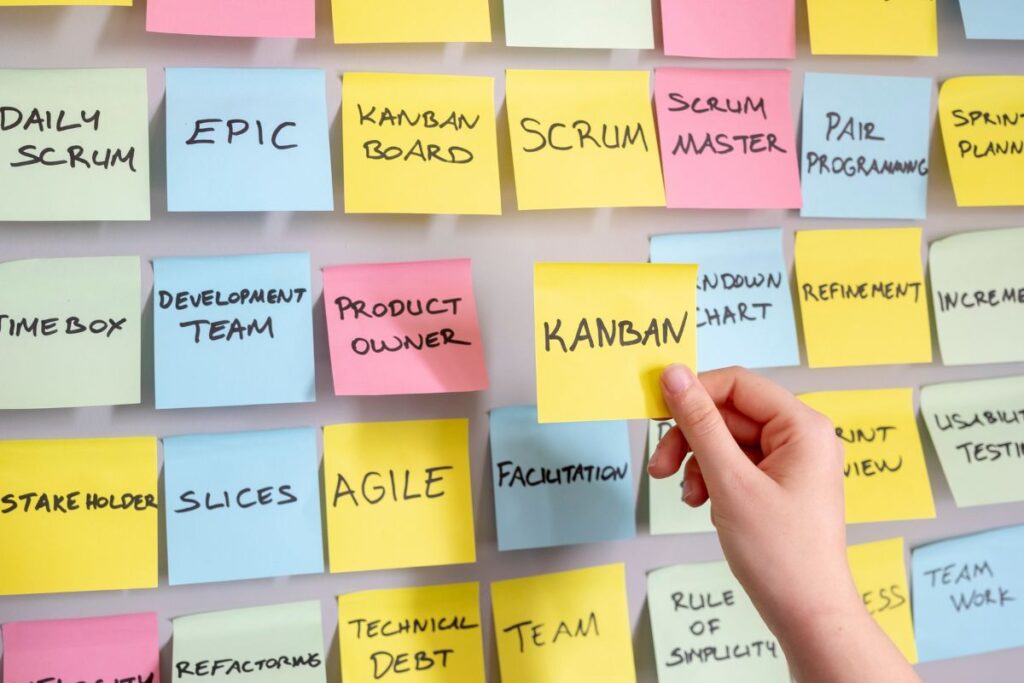
Kanban originates from the Japanese automotive industry in the late 1940s, developed by Taiichi Ohno for Toyota to improve manufacturing efficiency. Besides, the term “kanban” itself means “signboard” or “billboard” in Japanese.
Teams can implement this approach by using Kanban boards, which are tools for visual project management. On a Kanban board, tasks are depicted as cards that transition through various phases of work, displayed as columns. Therefore, this setup allows teams to monitor work progress in real-time.
4 core principles of Kanban methodology
Kanban is built around a few core principles that guide its implementation:
- Start with what you do NOW: Kanban does not require an existing process to be completely overhauled. Instead, it can be overlaid on current workflows, allowing incremental changes without disrupting the system.
- Agree to pursue incremental, evolutionary change: Kanban promotes gradual changes that evolve as the system and its users experience and understand its benefits and functionality. As a result, this helps minimize the resistance among team members.
- Respect the current process, roles, responsibilities, and titles: Kanban recognizes the importance of existing roles and encourages preserving them to maintain continuity and stability.
- Promote acts of leadership across all levels: Kanban enhances the system’s effectiveness by fostering a proactive, engaged, and agile workforce. This democratic approach improves processes and helps build a resilient and innovative organizational culture.
What is a Kanban board?
As mentioned earlier, Kanban boards are visual tools, whether physical boards with cards and columns or digital tools, to implement this agile methodology. You can use it to help teams manage and streamline their workflows more effectively.
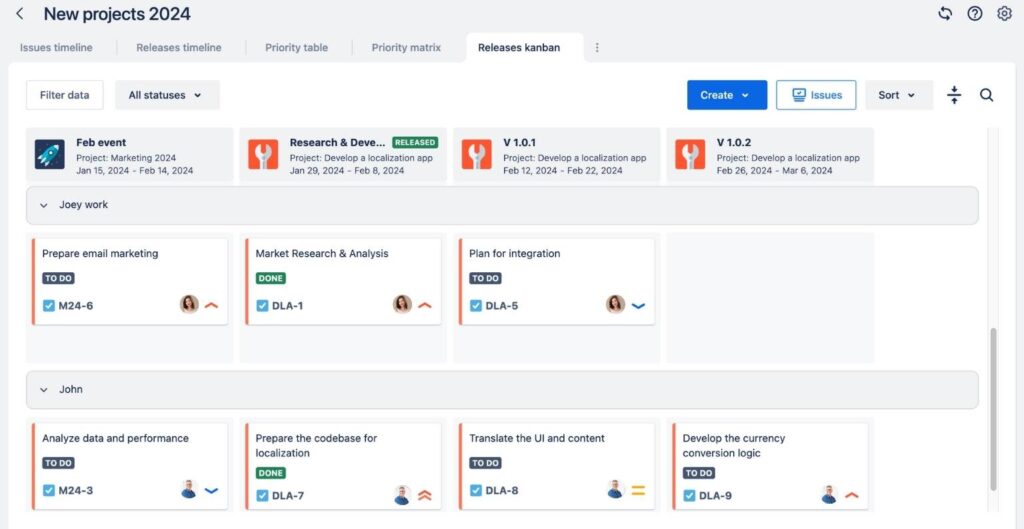
More specifically, the board visualizes the flow of work and allows the whole team to see the status of every task at any given time. Therefore, it can effectively promote efficiency and ensure your tasks move smoothly from initiation to completion.
1. Key features of a Kanban board
For a better understanding, here are the main features you can find on any Kanban board:
- Columns: A basic Kanban board normally contains 3 columns representing different workflows: To do, In progress, and Done. However, you can always change the workflow or add more columns to make the Kanban board suit your needs.
- Cards: You can use cards to represent individual tasks or work items. Moreover, each card moves from one column to the next as the work progresses through stages. Cards typically contain information such as task descriptions, due dates, assignees, and any other relevant details
- Work-in-Progress limits: Many Kanban boards use Work in Progress (or WIP) limits, capping the number of tasks in a particular stage at any one time. As a result, this helps prevent bottlenecks in the workflow. It also ensures that tasks do not pile up in any single stage and that each task is given adequate attention.
- Swimlanes: Some Kanban boards also include horizontal lines known as swimlanes, which can be used to categorize tasks into different streams or priorities. This feature helps in managing multiple types of work or different teams on the same board.
2. Why use the Kanban board
The benefits of using a Kanban board are numerous and impactful for teams across various industries.
Firstly, it enhances visibility for all team members and stakeholders. The visual nature of the board allows everyone to see the status of tasks in real-time, promoting transparency and improved communication.
Secondly, it can significantly boost productivity. By implementing work-in-progress limits and visually tracking task progress, you and your team can focus more on completing current tasks rather than juggling multiple at once. Thus, the Kanban methodology helps reduce multitasking and increases overall efficiency.
Finally, Kanban boards facilitate continuous improvement. The clear layout of workflows encourages the whole team to constantly observe and refine their processes, striving for higher efficiency and effectiveness in task completion. As a result, this ongoing optimization helps you maintain high performance and adapt to evolving project demands.
What is Kanban vs Scrum difference?
Scrum is another popular Agile framework for project management. Similar to Kanban, the Scrum methodology is also based on Agile project management and has principles and ideals alike.
Moreover, both methodologies promote teamwork, continual enhancement of processes, and project breakdowns into different phases. Still, Kanban and Scrum have different characteristics and are suitable for different kinds of projects and teams.
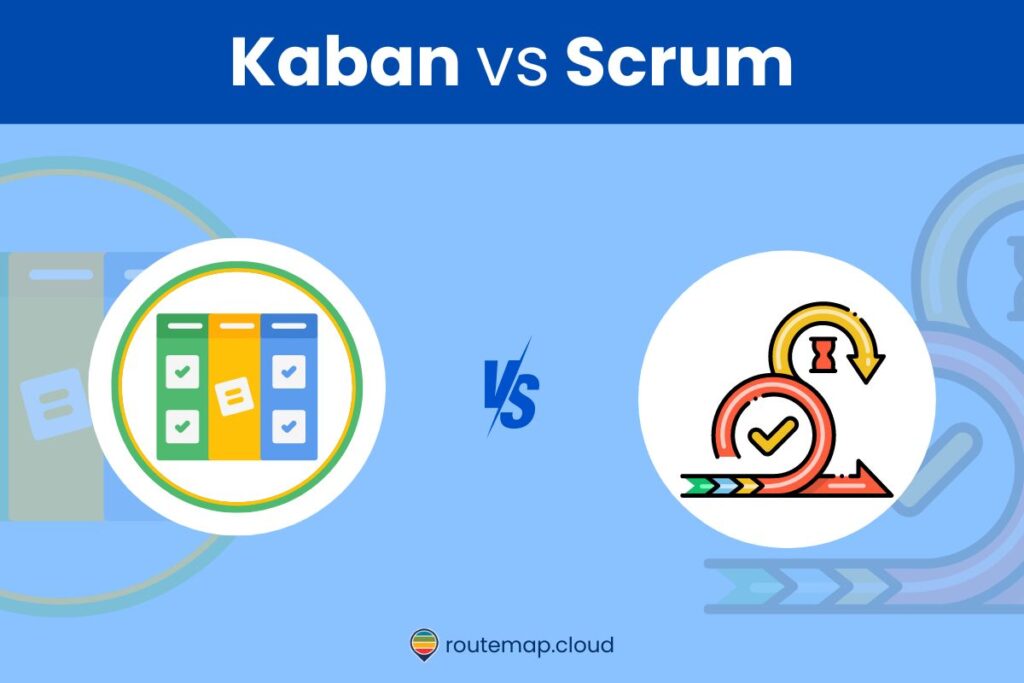
On one hand, Kanban is highly flexible, allowing for continuous adjustments to workflows and task priorities without fixed schedules. It does not prescribe specific roles, enabling team members to adapt their responsibilities based on the task at hand.
Additionally, Kanban in project management employs work-in-progress (WIP) limits to manage task flow and avoid bottlenecks, ensuring steady progress. Therefore, this adaptability makes the Kanban methodology ideal for projects with frequent changes and varying demands.
On the other hand, Scrum operates within fixed-length cycles called sprints, typically lasting 2-4 weeks, where work is planned in advance, and changes during the sprint are minimized. Besides, it features more defined roles such as the Product Owner, Scrum Master, and Development Team, each with specific duties.
So, Scrum’s structured approach is suitable for projects that require stability and predictable delivery schedules.
Kanban template for Agile teams
1. Where Agile teams can find a Kanban template
If you are working in an Agile environment, you might want to take a look at Atlassian’s tools such as Jira. It is a project and product management platform tailor-made for Agile teams.
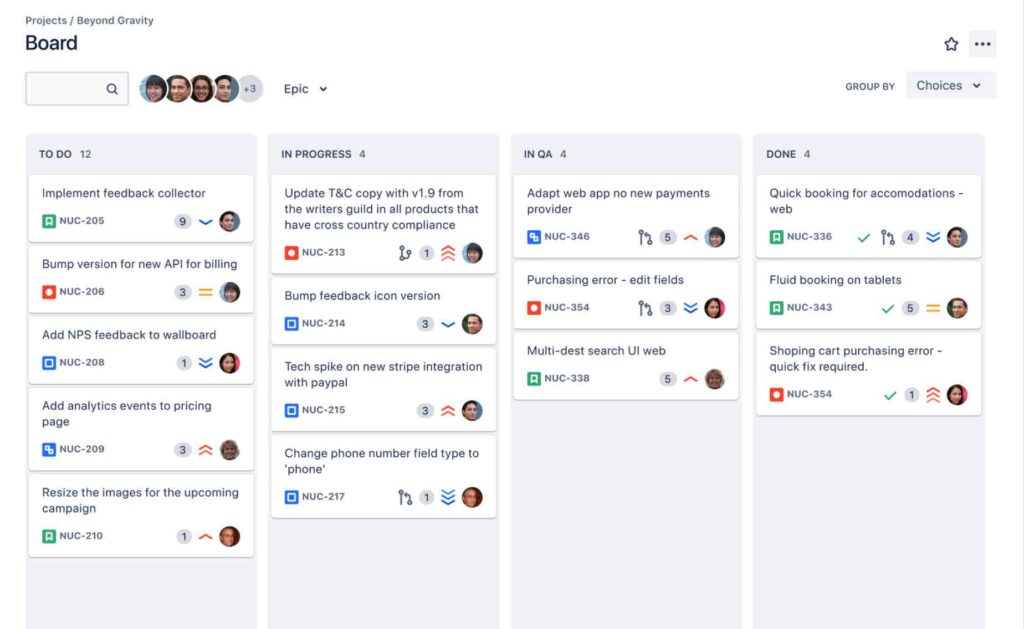
Moreover, the platform supports both Kanban and Scrum features to enhance your Agile project management, ensuring that your work can run smoothly. However, Jira Kanban can be not-so-intuitive and lacks some features like exporting board data as CSV or Excel files and automatic synchronization with project dashboards for a high-level view of your projects.
Not to mention, if you want to get a complete portfolio management of all projects across the organization with Jira Kanban, it won’t be possible.
2. Get a wholesome Kanban template with Routemap
But don’t worry, you can always look for a solution from the Atlassian marketplace to fulfill your needs. One of them is Routemap – Portfolio Roadmaps, Timeline Gantt-chart & Kanban for Jira.
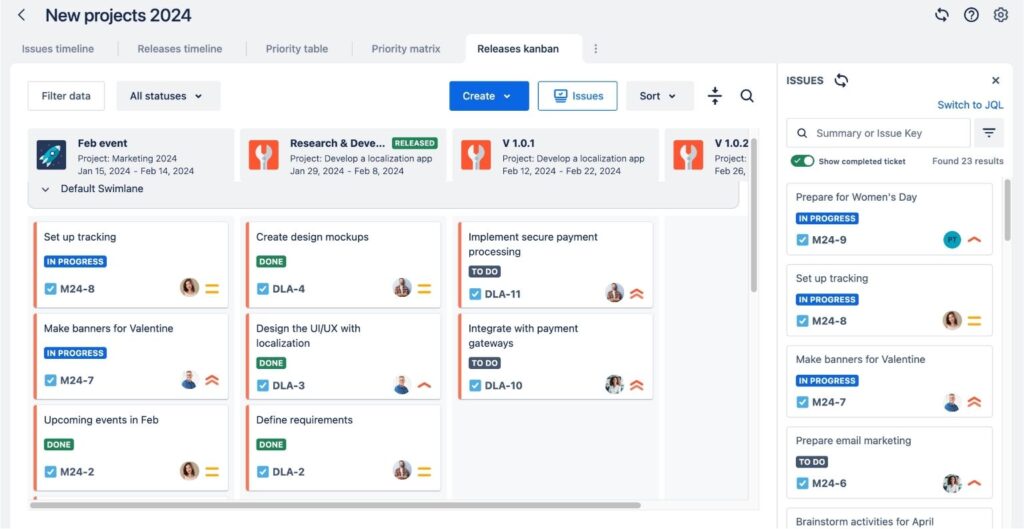
This is an outstanding solution providing a Kanban board template for Jira. You can use this app to visualize ALL your tasks and projects systematically on the same board, allowing you to get a complete overview of your organization’s project releases.
Additionally, you can also combine the Routemap’s Kanban with other project management features like advanced roadmapping, visualizing task dependencies, prioritization, and more to streamline your workflow even better.
Final thoughts on Kanban methodology
Kanban offers a flexible and effective framework that can transform project management practices across various teams and industries. By adopting Kanban, Agile teams not only improve their workflow efficiency but also foster a culture of continuous improvement and collaboration.
Whether you’re looking to refine your process or gain better visibility into your projects, Kanban provides the tools you need.
Besides, experimenting with Kanban’s principles and integrating its practices can lead to substantial improvements. As a result, it can become a valuable strategy for any team committed to Agile methodologies.
Related articles:

